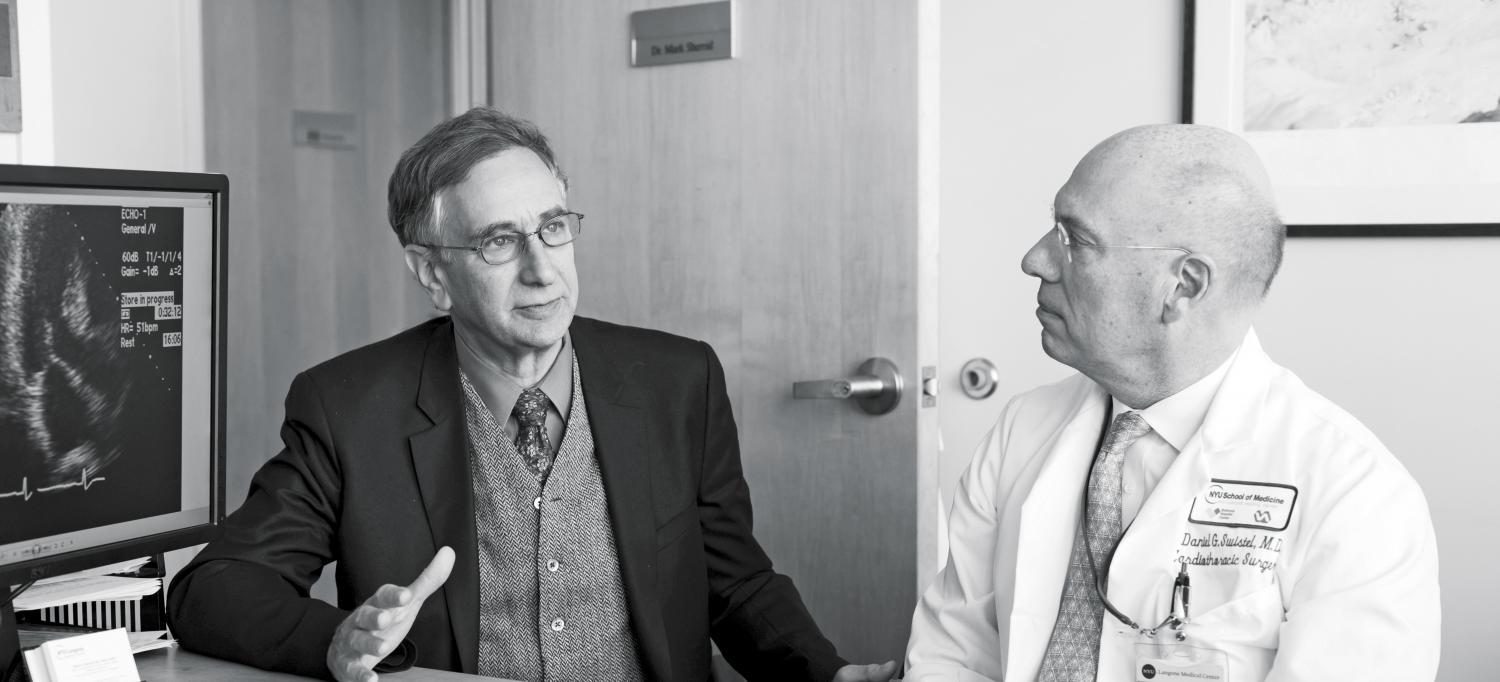
Photo: Karsten Moran
When the patient started to experience shortness of breath and fainting spells, he consulted a cardiologist. He was diagnosed with hypertrophic cardiomyopathy (HCM), an inherited condition affecting 1 in 500 people in which the heart muscle thickens, compromising the heart’s ability to pump blood and beat rhythmically.
All too often, the complications of HCM are overlooked, or the disease itself is misdiagnosed or improperly treated. “HCM is the great masquerader,” explains Mark Sherrid, MD, medical director of NYU Langone’s new Hypertrophic Cardiomyopathy Program. With nearly 1,400 patients, the program is one of the largest of its kind in the country. “It looks like other cardiac diseases—and also noncardiac ones, from exercise-induced asthma to panic attacks. Moreover, the disease affects individuals differently, with a variety of symptoms.” Complicating matters, HCM can strike adolescents and young adults, in whom heart problems are not expected to arise. In the US, it’s the leading cause of sudden cardiac death among young athletes.
Treatments failed to help the patient, so he visited one cardiologist after another before finally consulting Dr. Sherrid, who asked him a simple question: “Do your symptoms get worse after eating?” The patient’s answer was an emphatic yes. Dr. Sherrid suspected that his patient’s symptoms were due to obstructed blood flow from the left ventricle, a common complication of HCM. He confirmed the diagnosis with an ultrasound technique he had developed in 2013. He then prescribed a medication whose use he had pioneered specifically to help improve ventricular blood flow in patients with HCM. The patient’s blackouts stopped, and his ability to exercise improved.
Many patients respond well to medication. For those who don’t, there is a surgical option. The program’s surgical director, cardiac surgeon Daniel Swistel, MD, has greatly improved a procedure that thins the wall separating the right and left sides of the heart.
“HCM used to be considered a disease with a very poor prognosis and few therapeutic options,” notes Dr. Sherrid. “Now, we have methods to eliminate obstruction, alleviate symptoms, and improve quality of life. First-degree family members should be screened for the disease. With appropriate treatment, most patients can expect near-normal life expectancy.”

